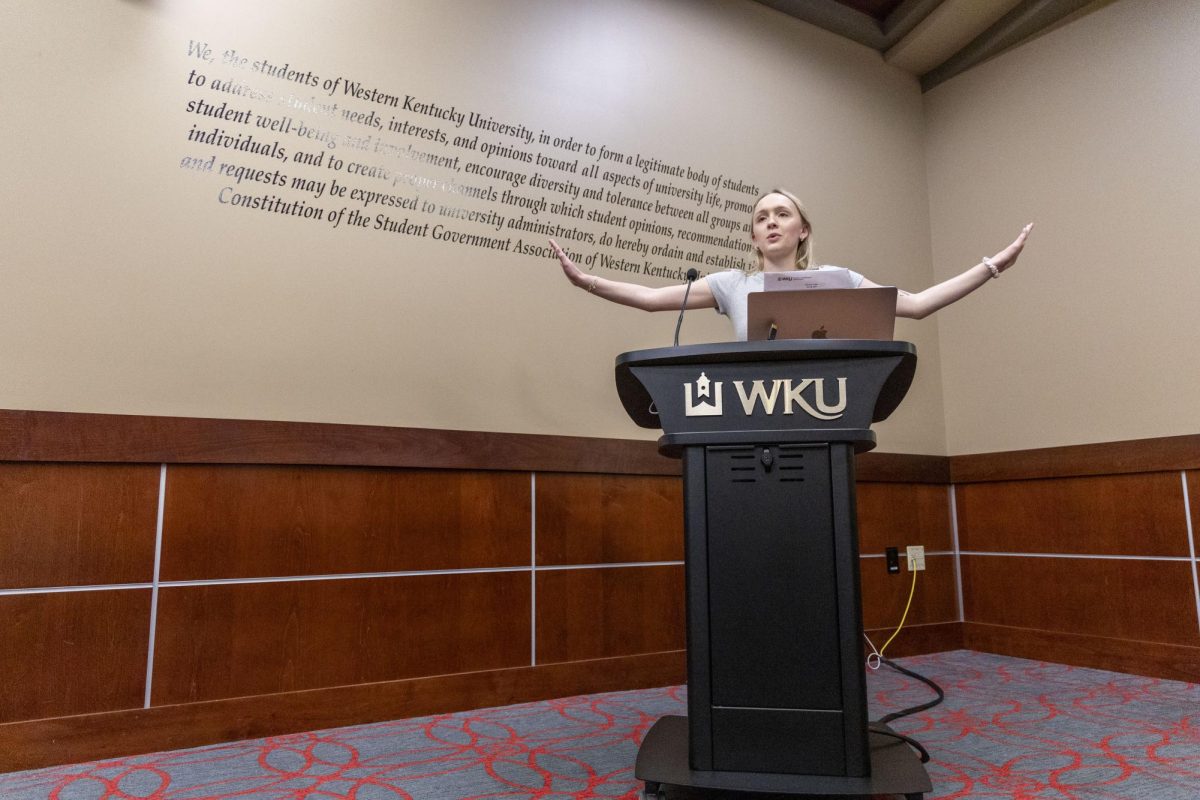Analysis of WKU 2017 crime statistics shows most common offenses
March 6, 2018
A WKU employee has illustrated crime statistics from WKU’s Police Department from 2017 by using Google maps.
The map reveals common locations for specific crimes, allowing for a better understanding of crime at WKU.
Kara Glenn, agency manager for Imagewest, said she spent close to eight hours working on the Google map layout after she attended a Google for Journalists session on Feb. 17.
Glenn said the way the crime data was presented beforehand didn’t really explain as much as it should. By using information given by WKUPD, Glenn said she color-categorized each crime, organized the crimes by month and placed an individual pin for each reported crime at WKU.
“Most of the crimes are thefts,” Glenn said. “Most of the cases are pending and will never close.”
There were 94 counts of reported thefts at WKU in 2017, according to the data she obtained.
Tim Gray, public information officer for WKUPD, said the thefts at WKU are mostly crimes of opportunity. He said people will see unattended items left around on campus or try unlocked doors and use those as opportunities for theft.
Gray said thefts are very difficult to solve because they usually don’t have a description of who committed the theft.
“Situational awareness and teaching people safety tips is a good preventative tool,” Gray said.
Glenn said the data showed that thefts tend to happen in high-traffic areas on campus, such as the Preston Center or residence halls.
Daniel Rosner, assistant director for student behavior and conduct, said WKU Housing and Residence Life has programs to encourage securing living spaces to prevent thefts.
“I would say that crime at WKU is fairly comparable to other universities with similar populations,” Rosner said in an email. “Because we have a large number of students living on campus, we see a variety of crime that encompasses students just coming to campus for class and students calling campus home.”
The map showed the second most common crime was drug-related arrests. She said almost all of the arrests were marijuana-related and commonly happened in residence halls. She said they accounted for nearly a quarter of the crime reports with 64 reported cases.
“If you removed marijuana, crime would drop drastically,” Glenn said.
Gray said WKUPD is not seeing very many expensive or “harder drugs” on campus. He said marijuana is like the cheap beer of the drug environment because it is cheap and has become popular among students. Although it is common, Gray said marijuana can still be dangerous.
“To people who are in the drug game, it’s a business,” Gray said. “Drugs, money and weapons often go hand in hand.”
Rosner said marijuana-related crime is not exclusive to WKU and is a trend nationally.
“After speaking with colleagues across the country who are in similar positions to mine, this is a national trend,” Rosner said. “I think it is important that students know regardless of your feelings on the issue of marijuana, it is still illegal in Kentucky and WKU’s policies reflect that.”
Glenn said her analysis has shown her campus isn’t as dangerous as she initially thought. She said she expected the crimes to be much worse.
“I feel safer after this,” Glenn said. “Most of the crimes are petty for a campus of this size.”
Glenn said she will hopefully make another map at the end of 2018 to see if the crime trends change or remain the same in the future.
Copy desk chief Spencer Harsh can be reached at 270-745-6011 and spencer.harsh755@topper.wku.edu.













